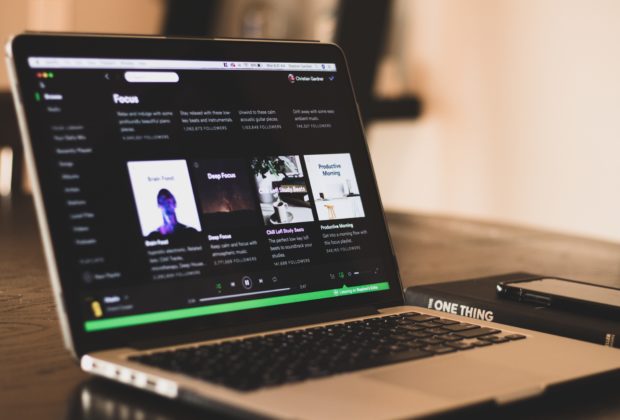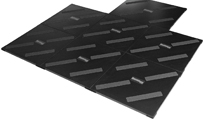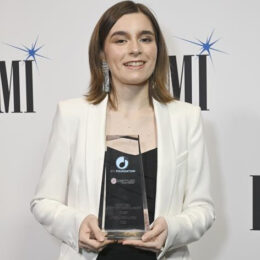Music discovery has evolved from night clubs, to print reviews, to radio, to blogs, to Hype Machine to Spotify playlists. Sure, people still “discover” music by all of these means, but over the past few years, the music industry has become obsessed with Spotify playlists because the discovery (and stream boosts) are so powerful. John Mayer brought on rock band The Night Game as his arena tour opener after discovering one of their songs on Spotify (via his Discover Weekly customized playlist). Discovery is real on Spotify––at every level from fan to superstar.
Entire industries have popped up utilizing the Spotify ecosystem focused squarely on playlists (much to Spotify’s chagrin). As the industry realized how powerful Spotify playlists were, the playlist editors (those at Spotify who are in charge of making the playlists) became the new radio programmers. The labels found ways to woo Spotify playlist editors to the point that even Spotify felt a bit squeamish with how it was all working. They officially came out against the policy of paying to influence playlist inclusion, but that didn’t stop individual playlist editors from taking bribes under the table and keeping it hidden from Spotify. And, Payola is only illegal when it comes to traditional radio, not Spotify.
Right now in 2019, the industry is obsessed with Spotify. And rightfully so. Spotify single- handedly brought back the recorded music industry from its death spiral of the early aughts. And it’s the reason the major labels are, once again, insanely profitable.
The one thing, however, that Spotify does not have is a real social component to it. There is no commenting, social sharing, public liking, social listening parties or anything that really inspires people to exist on Spotify like they do on other social platforms. So, even though fans LOVE Spotify and artists and labels are OBSESSED with getting their fans to listen to them on Spotify, you can’t develop a fan-artist relationship on the platform. At least not yet.
Which brings us to Instagram. The kids are all on Instagram. Not Facebook. Facebook is so last decade. Sure, Facebook may be YOUR favorite platform to use, but it ain’t the under 35 crowd’s. Millennials and Gen Zers, en masse, prefer Instagram over Facebook to follow and interact with their favorite “influencers” aka musicians.
Yes, email is important still. But if your audience skews young, it’s very challenging to get their email addresses (and they aren’t checking their emails like they check Instagram). Grabbing phone numbers is becoming the new email, but this doesn’t help foster a relationship––only a sale.
Instagram is where you build the relationship with your audience. It’s where they can feel you and what you’re about.
Instagram has evolved from a simple photo sharing app to one of the most important apps for creating an artist world and engaging an audience.
Sub communities have now popped up within Instagram that have single-handedly launched careers. @pickup____, @pickupjazz, @brilliant musicians, @musiciansshowcase, @talented_musicians, @chorus and @omgvoices were some of the first (and most powerful) accounts to feature the musicians of Instagram. PickUp has actually grown into a musicians’ community, regularly hosting events around the world.
San Diego native Raelee Nikole (@raeleenikole) had been gigging around her hometown since she was 17. She had an Instagram account since the beginning of the platform (circa 2012) and posted to the platform like every other teenager. But it wasn’t until late 2016, when she posted a video of herself playing guitar/singing Musiq Soulchild’s “Just Friends,” that everything changed. The @pickupjazz account featured her video, and followers came pouring in for Nikole. The next video she posted, playing the guitar part for John Mayer’s “Paper Doll,” John Mayer himself commented on the video. She attracted more and more attention as she posted more and more videos. Shawn Mendes followed her and even tweeted one of her songs (which subsequently hit Spotify’s Viral 50 chart). Mendes introduced Nikole to his writing partner, Scott Harris, and soon she was writing with some of the biggest songwriters in the world. She now has over 135,000 followers.
Also in 2016, New Zealand-based Emily C. Browning (@emily.c.browning) attended an Instagram clinic given by Sam Blakelock of @pickupjazz (also a New Zealand native). Browning, an incredibly talented guitarist-singer-songwriter, posted a cover song, tagged @pickupjazz and soon she was featured as well. She began regularly posting songs on her account and got featured on not only the @pickupjazz account, but a few other popular music-focused accounts.
About a year into the process, she looked at her Instagram analytics and realized she had a lot of followers in LA, so she booked a trip out to LA, teamed up with a couple of other LA musicians she’d met on Instagram and sold out her very first show in the US. She now has over 120,000 followers.
Sam Blakelock gave another Instagram
masterclass in July 2018, which he live-streamed and added to the @pickup___ IGTV channel. He explained that the key to being a successful musician on Instagram relies on five key components:
• Quality Content
You can’t fake your way to success on Instagram. The algorithm has gotten incredibly smart and highlights great content––regardless of the subject matter.
• Positive Community
Make sure you reply to some of your comments and interact with people in your DMs. But keep it positive. If people are trash talking in your comments, don’t stoop to their level or engage combatively. This ain’t Facebook.
• Consistency
“You’re not going to over post if the content is high quality and is varied,” he says.
• Trial and Error
You don’t want to merely be a follower on Instagram. You want to be a leader and experiment with ways to engage and grow your audience. Learn from other successful accounts, but come up with ways that showcase your personality and skills best.
• Collaboration
Find people who are doing what you want to do and collaborate with them.
Like YouTube, some of the most successful Instagrammers collaborate. That means tagging the company who made a dress, tagging everyone in the photo, including friends in your stories and showcasing their handles, mashing up other videos with your own, giving a shout-out to someone in the comments or making friends in the DMs. And you don’t actually have to be in the same time zone as your collaborators. Just tag them and they may Regram and tag you back, as has been the case with the popular musician-feature accounts.
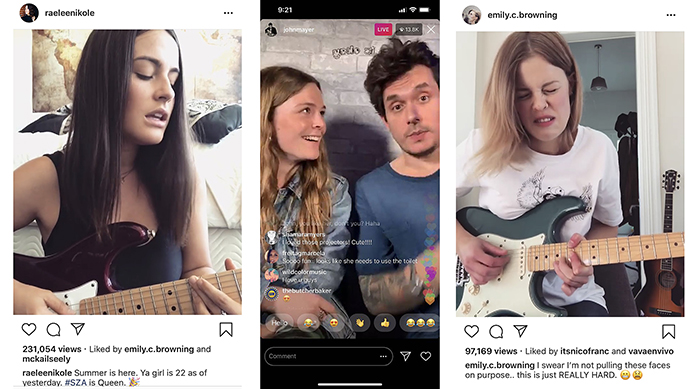
After Raelee Nikole posted a 20-second clip of herself playing/singing her neosoul rendition of SZA’s “The Weekend,” New Zealand-based (something’s in the water) @thejuneyboy took her video, sliced himself into it (cutting back and forth between her and him) and remixed her original audio––adding a beat and some lead guitar. This may not sound that impressive, as remixes happen regularly now; but, remember that at the time, it took figuring out how to download her video (through hacks––as Instagram doesn’t enable this), then dumping the audio into a DAW, mixing in his own creation then syncing it back up to video (cutting in his own video). The remix video got over 150,000 views on her profile. Similarly, @p_larddd remixed Nikole’s rendition of “Redbone.” She Regrammed it with “Shoutout to 2017 for giving kids with bedrooms on opposite sides of the country a way to shed together!”
Multi-instrumentalist Elise Trouw (@elise trouw) was incredibly active within the community when she first started on the platform. She regularly posted videos of herself playing drums, bass, guitar, singing and similarly got featured on popular musician-feature accounts (long before her looping videos on Facebook and YouTube went viral).
Again, it’s not about one viral video, it’s about staying active within the community, regularly releasing high-quality content, staying genuine (not forcing anything), trying (and failing) incessantly and keeping up with the trends of the times.
John Mayer took Instagram Live to a whole new level by hosting his own talk show from his living room. He goes live on his Instagram (@johnmayer) every Sunday, streamed out from his phone with no fancy lights or production. One angle, live. He calls it Current Mood and celebrities regularly pop on to talk, sing, shoot the shit, drink and do random dumb things.
Past guests include Maggie Rogers, David Spade, Dave Chappelle, Bob Saget, Halsey, Charlie Puth, Thundercat, Cautious Clay, Andy Cohen and Alec Benjamin.
When Story Highlights were released, many musicians got creative and used the story bubbles at the top almost as the way a website toolbar functions: Music, Videos, Tour, Vlog, Merch, etc. Highlights with full Swipe Up capabilities per highlight. In the Tour Highlight, they could post a photo per date with the Swipe Up linking directly to purchase tickets. The Videos Highlight could feature various video clips with the Swipe Up function linking to the full video. Merch Highlight could feature merch items with the Swipe Up feature linking directly to each item on your website. Some just posted one image per Highlight (Spotify, YouTube, Apple Music, Tour, etc.) and linked directly to that. You get the idea.
When IGTV was released, people created content specifically for the medium. Brassroots District (@brassrootsdistrict) created a live performance video from the studio with boxes popping in and out of the frame. The video was of course edited in a vertical manner to fit the platform’s specifications.
Similarly, Lauren Ruth Ward (@laurenruth ward) created a live performance video from one of her recent shows at the Echoplex in LA that was vertical, with multiple camera angles stacked on one another, popping in and out, off and on. This style of video editing wasn’t prevalent anywhere else at the time (because it wouldn’t work as well on any other platform for any other medium). But it was perfect for IGTV.
The 1975 made a custom (vertical) lyric video for their song “Give Yourself a Try,” which played on the same aesthetic theme of their main music video, but was specific for the platform. (They also made similar videos exclusive to Spotify for their new album).
And the beautiful thing about Instagram is that you can find and grow your audience on the platform even without being featured by other popular accounts.
Use Direct Marketing To Grow Your Audience on Spotify and Instagram
Three years ago, the northern Virginia conscious hip-hop artist Lucidious was struggling to get listeners to his music. He had about 150 monthly listeners on Spotify (no, I didn’t forget a zero) with merely 45 followers, about 1,500 followers on Instagram and Facebook. And was making less than $100 a month from his music.
Fast forward to today, three years later, he now has 500,000 monthly listeners on Spotify (no, my finger didn’t get stuck on the zero key), over 50,000 followers on Spotify, 250,000 likes on Facebook, 100,000 followers on Instagram, he’s getting around 5 million streams a month, has over 100 million total streams across all platforms and is making around $20,000 a month just from his recorded music. Oh, and he’s got no label, no manager, no publicist, no agent and is on zero official Spotify playlists.
I’ll pause as you pick your jaw up from the floor.
He utilized direct marketing strategies on Facebook and Instagram to find his audience and get them into his world. These are real fans. Not bots. Human beings. He showed me his Instagram inbox which is flooded with fans telling him how his music saved their lives. His music focuses on mental health awareness.
Specifically, he mastered the Facebook Business and Ads Manager and ran all different kinds of video ads targeting fans of similar artists. They came pouring into his world and eventually he was getting fans to click on his ads at around $.02 per click—putting every marketing expert to shame. Spending about $10 a day, he was pulling in around 500 new fans per day. And because his music is great and his Instagram is engaging (i.e. he is very active on there, responding to comments and messages), these people who started off as passive observers turned into diehard fans.
I tested out his strategies with my project and a bunch of friends’ projects in various genres and it works across the board. This is not a fluke and this is not because of the kind of music he makes.
He did this all on his own, without the help from the industry. And he’s been largely ignored by the industry. And he’s A-OK with that because he’s making a solid living and has 0% commission to pay out to anyone. His fans know he exists. And that’s all that mattersBut But But, Playlists!
Okay, deep breath. Despite what you might think, you do not want to bet the horse on getting on Spotify playlists. For one, you’re fighting against every label, every distributor, every manager and every artist for coveted playlist slots. There are only so many slots and only so many playlists. We are too obsessed with the playlist game. Playlists are fickle and do not get real FANS into your world. Yes, getting on a few hot playlists can skyrocket your monthly listeners and streaming numbers overnight. But these are not your fans. These are fans of the playlist.
We are in an era where consumption comes first and fandom comes last.
This used to be flipped. Historically, people would hear a song on the radio or from a friend, become a fan of the artist, then buy and consume the album. Now, people hear songs on playlists and, sometimes, rarely, will they actually dig deep into the research to discover the name of the artist whose song they dug on the playlist.
Sometimes, rarely, they will tap through to the Artist’s profile and listen to their most popular songs. Sometimes, rarely, they will listen to a recent album. And even less frequently, will they dig even deeper into that artist across social platforms and the internet at large. And then, maybe, will they decide to take action and become a true fan, supporting that artist financially by coming to their show, buying some merch, or backing their crowdfunding campaigns.
We are living in an era where there are artists with millions of streams on Spotify who cannot draw 50 people to their local shows.
These artists are making a solid living off of their Spotify streams, but don’t have any real fans. I’ve heard of artists who were able to quit their day jobs because they got included on a few hot playlists which earned them millions of streams a month (thousands of dollars a month), only to get dropped from those playlists and have to beg for their job back when their streams dropped to virtually zero.
It’s time to break away from the obsessive playlist mentality!
The best way to find and grow your audience is now through direct marketing. Not PR. Not playlists. Not touring. Not blogs. Marketing. And you don’t need to spend that much money to do it. You just have to master the ad platform. Anyone can do it. I didn’t know how to do this two months ago and now I teach fellow musicians how to do it! I’m no genius. You can do it. You just have to hunker down and make it work. Yes it’s complicated. Yes the backend Business Manager can be insanely confusing. But that’s the work you gotta put in if you want to compete. Once you learn it and get it down, the hard part is over. You can then go back to making music.
The beautiful thing about direct marketing is that once you set the ads, they go. Sure, you want to monitor them, but once you get an ad that’s effective, you don’t really need to touch or tweak it for a while.
So, instead of posting incessantly on Instagram and Facebook begging people to share your stuff, go directly to the people who would dig what you’re doing.
It’s a very exciting time to be a musician. •
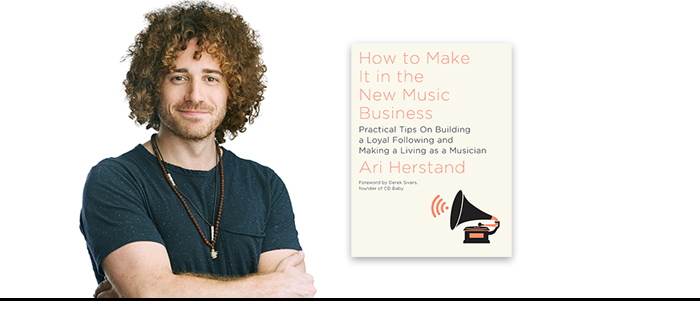
ARI HERSTAND is the author of How To Make It in the New Music Business, the founder of the music business advice blog Ari’s Take, a Los Angeles-based musician and the creator of Ari’s Take Academy, an online school teaching musicians, managers, indie labels and agents how to master social media through direct marketing to grow their fan bases and tour the world

